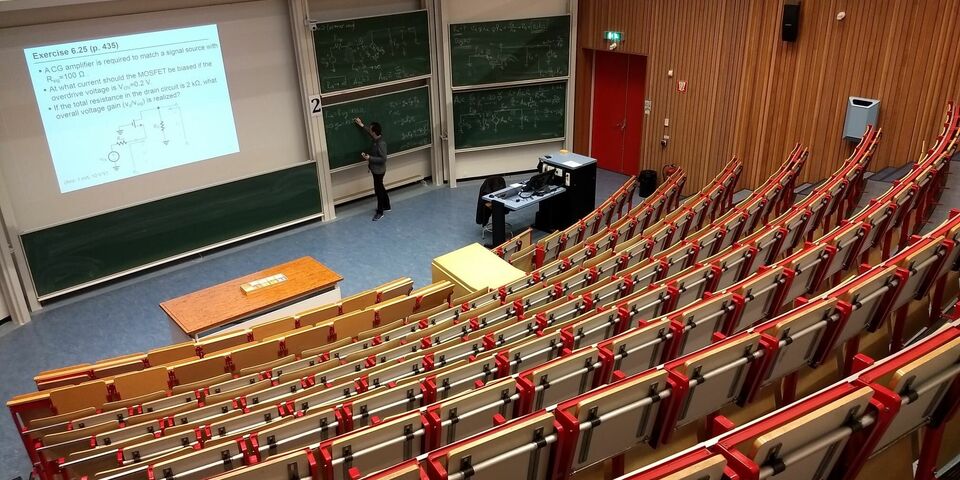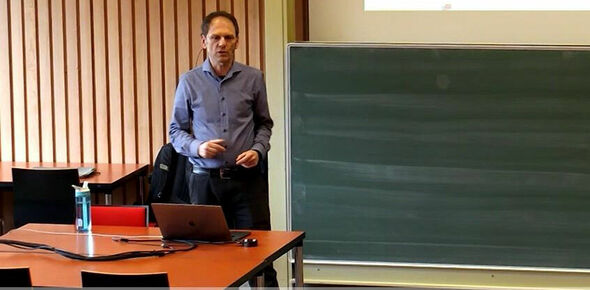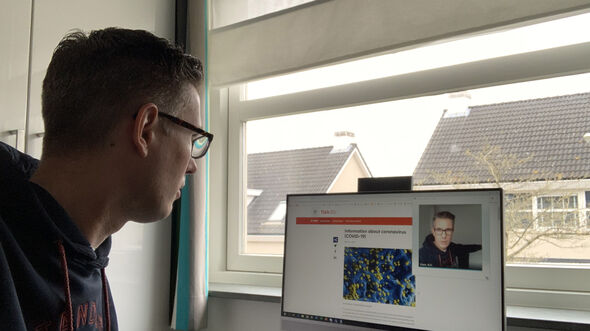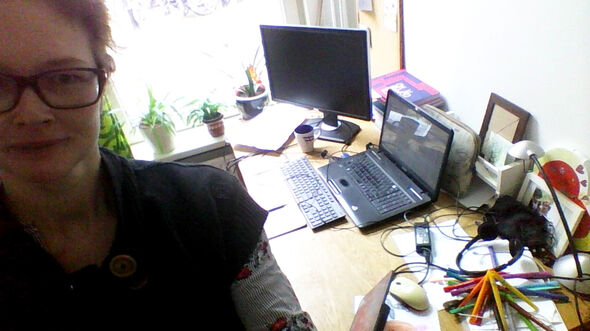Organizing all education online; an extremely complex task
Teachers have one week to provide all their education completely online. Presenting subject matter, answering questions, checking what students learned. How do they manage? Some teachers simultaneously have to take care of children staying home from elementary school.
Immediately after the Executive Board announced the measure ‘Education activities will resume online starting Monday, 23 March; this online education is mandatory,’ ESA made an inventory of what teachers needed. “We now try to integrate their wishes in the existing infrastructure,” says Ludo van Meeuwen, Manager Teacher Support & Quality Assurance at ESA. “We’re making a more than fulltime collaborative effort with twenty-five people, from departments as well as centrally. Of course, we were digitalizing already, but this crisis puts all our activities in a high-pressure cooker.”
For Tom Verhoeff, Assistant Professor at the Department of Mathematics and Computer Science, online education for Q3 means having to record the sixth and final lecture of Programming & Modeling for first-year students in the Auditorium. “I quickly received an online form with which I could sign up for recording the (remaining) lectures. That seems to be running very smoothly. There is a roster that marks the allotted halls and timeslots for teachers.”
Niels Deen, professor at the Department of Mechanical Engineering, finds his timeslot “ironic.” On Friday the 13th, he gave a lecture in AUD1 in front of 300 empty seats. “I didn’t like it at all, not having any interaction with my audience, but hopefully it was helpful for the students who were streaming the lecture at home.”
He noticed that everyone has an incredible positive spirit to work together and help all the students without wasting any time. “Arrangements had to be made not just for the courses, but it was also necessary to look for creative solutions for external internships and experimental BEP and MSc assignments. Fortunately, that all seems to work out; all the teachers deserve a huge compliment for that,” Deen says. “The department’s crisis team involves us and keeps us well-informed. ESA is also ready to help with all kinds of things. And Canvas quickly set up a self-help page that was very helpful for teachers.”
Canvas
Asynchronous communication, recording lectures and making them available to students on demand are well underway. Interaction between student and teacher is more complicated however. “For real life education, we look to functionalities, together with IMS, within licenses we haven’t used before,” the manager Teacher Support says. “We are quickly converting pilots that were up and running into a released situation.” Van Meeuwen has heard about people’s impatience when setting up activities with Zoom, but he would like everyone to appreciate the extreme complexity of the task his team is faced with. “TU/e doesn’t have a license for Zoom. We are looking for solutions that are in line with TU/e’s privacy and security policy. We want it to be user-friendly for students and teachers, and for that it needs to be integrated seamlessly into Canvas. We don’t want an uncontrollable proliferation of learning environments. I first believed that we could push things along a little, until I realized just how complex this task really is. It won’t help us at all if we set up tool now that stops the leakage, so to say, only to have the entire university crash not much later. We need to have the guarantee that it will work. That is why we don’t rush into things. We really are making an all-out effort.”
Niels Deen agrees: “We’re training hard with Canvas Conferences. Fortunately, the free version of open-source web conferencing system BigBlueButton was converted into a paid version last Thursday. I had never heard of it until last week, but it feels good pounding away on those big blue buttons. The free version couldn’t handle that many users, whereas the paid version (for which TU/e bears the costs) offers more capacity now that many people want to use it at the same time.”
Worries about exams
Teachers are more worried about testing the subject matter. Tom Verhoeff hopes that it will be possible to proctor during exams in some way or another. “The concluding exams, a regular one and two retakes, are going to be a kind of ‘take home’ exam. We’re looking into possibilities for remote proctoring.”
Van Meeuwen believes TU/e deserves to be mentioned in the Guinness Book of Records if it manages to successfully hold all exams online. “There is no technical solution at this moment. We are working on the first tests, but it is a significant task. We asked teachers to come up with alternative exam methods. The most important thing is that students won’t pay the price.”
Supervision
And then there is the societal crisis to deal with. Lenneke Kuijer, Assistant Professor at Industrial Design, actually doesn’t have enough time. “I have an extra job now that the schools have closed. Fortunately, my husband helps out as well, but I’ve become an elementary school teacher for half of my time. It’s actually quite a lot of fun, and it provides me with a unique insight into the living environment of my children (of 6 and 8), but I do have less time and energy for my TU/e activities as a result.”
Kuijer doesn’t coordinate a course this quarter. “I do however supervise about 15 students in projects. This supervision, naturally, takes place virtually now, which I do under normal circumstances as well sometimes. The big difference this time is that it lasts much longer. When you meet physically, you get a much better impression of a student’s work, but also of how they feel and how the group dynamic works. I seriously worry about how my students are doing, because it’s more difficult to monitor them now. Especially because all the restrictions, such as not having access to labs and not having contact with end users, also makes work more difficult for them.”
Kuijer hasn’t started yet with digitalizing her course in Q4. “It’s not something I look forward to, because I really enjoy the dynamics in a classroom. I try to make the best of it and I’ll wait and see what happens.” She does have a message for her students: “Don’t hesitate to contact me if you get stuck, or simply if you want to talk. We’ll always manage to find time for that.”





Discussion